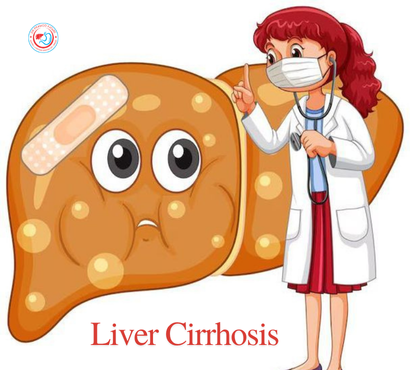Cirrhosis is the final, irreversible stage of chronic liver damage, characterised by scar tissue replacing healthy liver tissue, hindering function. In India, major causes include alcohol misuse, viral hepatitis (B/C), and rising fatty liver disease due to obesity and diabetes. While cirrhosis cannot be reversed, effective prevention and early management can significantly slow progression and prevent life-threatening complications.
2 | Understanding the Causes
| Cause | Explanation |
| Alcohol | Chronic intake damages liver cells; even moderate use risk varies individually |
| Viral hepatitis (B & C) | Persistent infections lead to necrosis, fibrosis |
| NAFLD/NASH | Linked with obesity, diabetes—can progress silently to cirrhosis |
| Other | Drugs, toxins, autoimmune diseases less common in India |
3 | Primary Prevention
3.1| Alcohol Moderation
- Limit intake (max 1 small drink/day for women, 2 for men).
- Avoid binge drinking.
3.2| Hepatitis Prevention
- Vaccinate for hepatitis B.
- Practice safe sex and avoid shared needles.
3.3| Weight & Metabolic Control
- Aim BMI 18.5–24.9.
- Regular exercise and balanced diet rich in fruits, fibre, low in unhealthy fats
3.4| Avoid Toxins & Drug Safety
- Use medications under supervision.
- Wear protective gear when handling chemicals.
3.5| Regular Screening
- Ultrasound and liver tests every 6–12 months for high-risk individuals (hepatitis, diabetes, fatty liver).
4 | Early Management Strategies
4.1| Lifestyle Modifications
- Diet: Low salt, high protein/vegetables.
- Exercise: Moderate (150 min/wk) improves liver parameters
4.2| Medical Treatments
- Antivirals: For HBV/HCV to halt disease progression.
- Beta-blockers: Reduce portal hypertension, delay varices development
- Diuretics: Manage fluid overload and ascites.
4.3| Monitor & Treat Complications
- Ascites: Paracentesis and salt restriction.
- Esophageal varices: Prevent bleeding with endoscopic therapy or medications.
- Hepatic encephalopathy: Use lactulose, reduce protein overload.
- HCC surveillance: Regular imaging and alpha-fetoprotein tests for cirrhotics.
5 | Advanced Support & Preparation
- TIPS procedure: Creates a shunt to reduce portal pressure.
- Transplant evaluation: Considered in liver failure or complicated cirrhosis.
6 | Living Well with Cirrhosis
- Avoid alcohol and hepatotoxic medications.
- Eat frequent, balanced meals to prevent malnutrition.
- Vaccinate against hepatitis A/B and flu.
- Take supplements (B-complex, vitamin D) under guidance.
- Join support groups for mental well-being.
Cirrhosis is preventable and manageable with alcohol control, hepatitis prevention, metabolic health, and prompt medical intervention. Early detection via regular screening is key. With lifestyle changes, supervision, and treatment, many lead healthy lives under medical guidance.
FAQs
Q1. Can cirrhosis be reversed?
Not fully—but early-stage (fibrosis) can improve with sustained lifestyle and medical changes.
Q2. How often should I check liver health?
Every 6–12 months for high-risk individuals; frequency may increase with complications.
Q3. Is moderate alcohol safe with cirrhosis?
Complete abstinence is advised; even small amounts risk accelerating damage.


